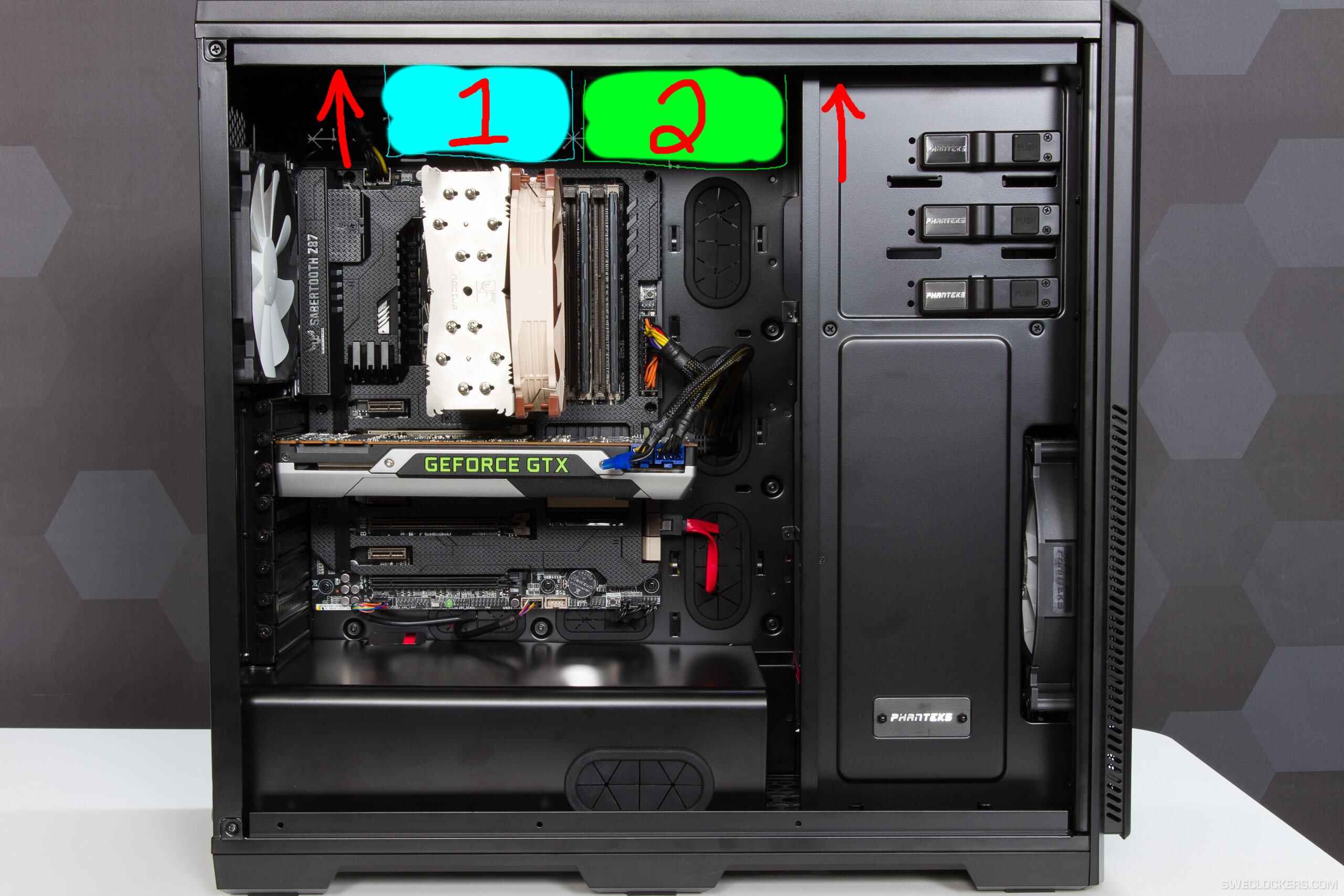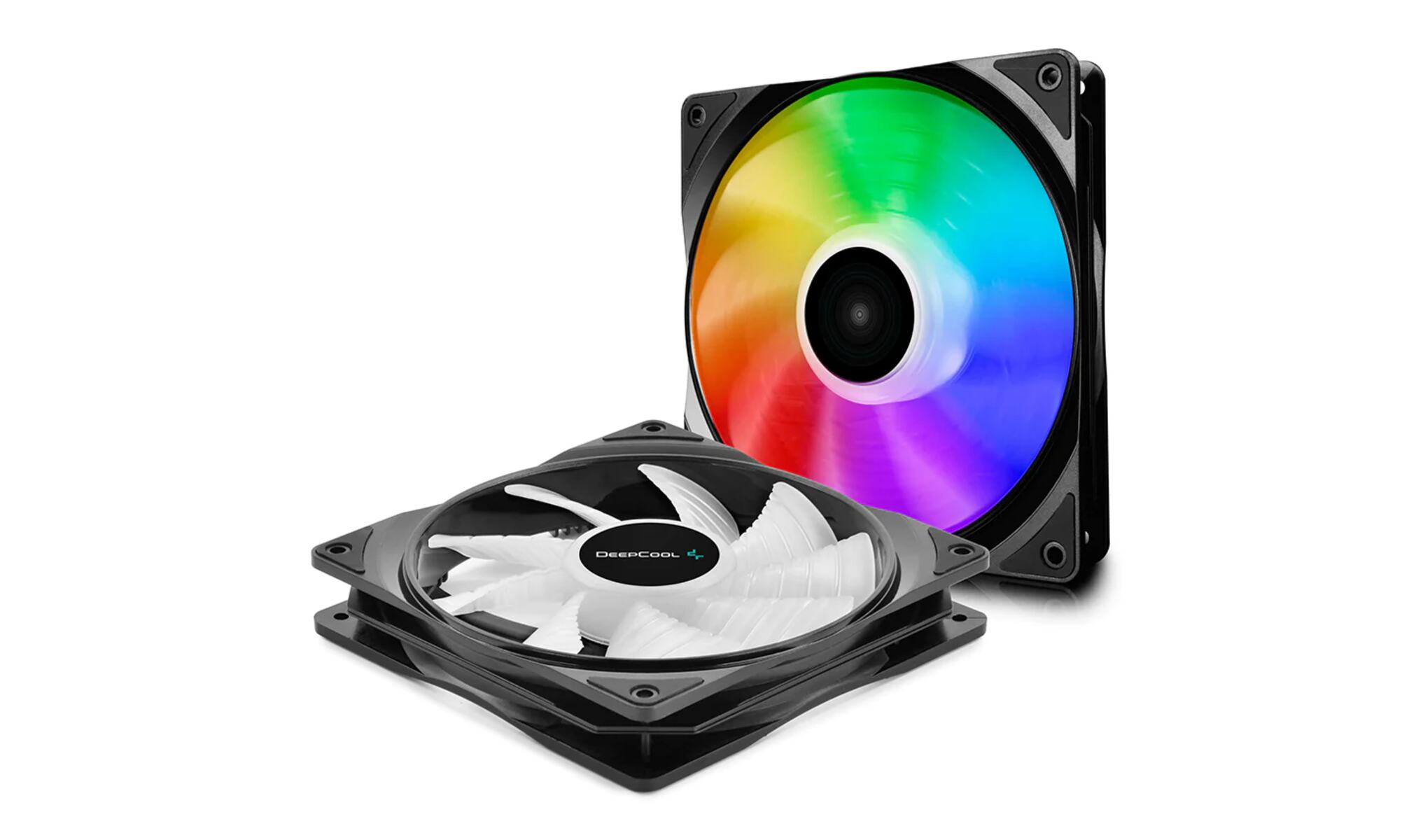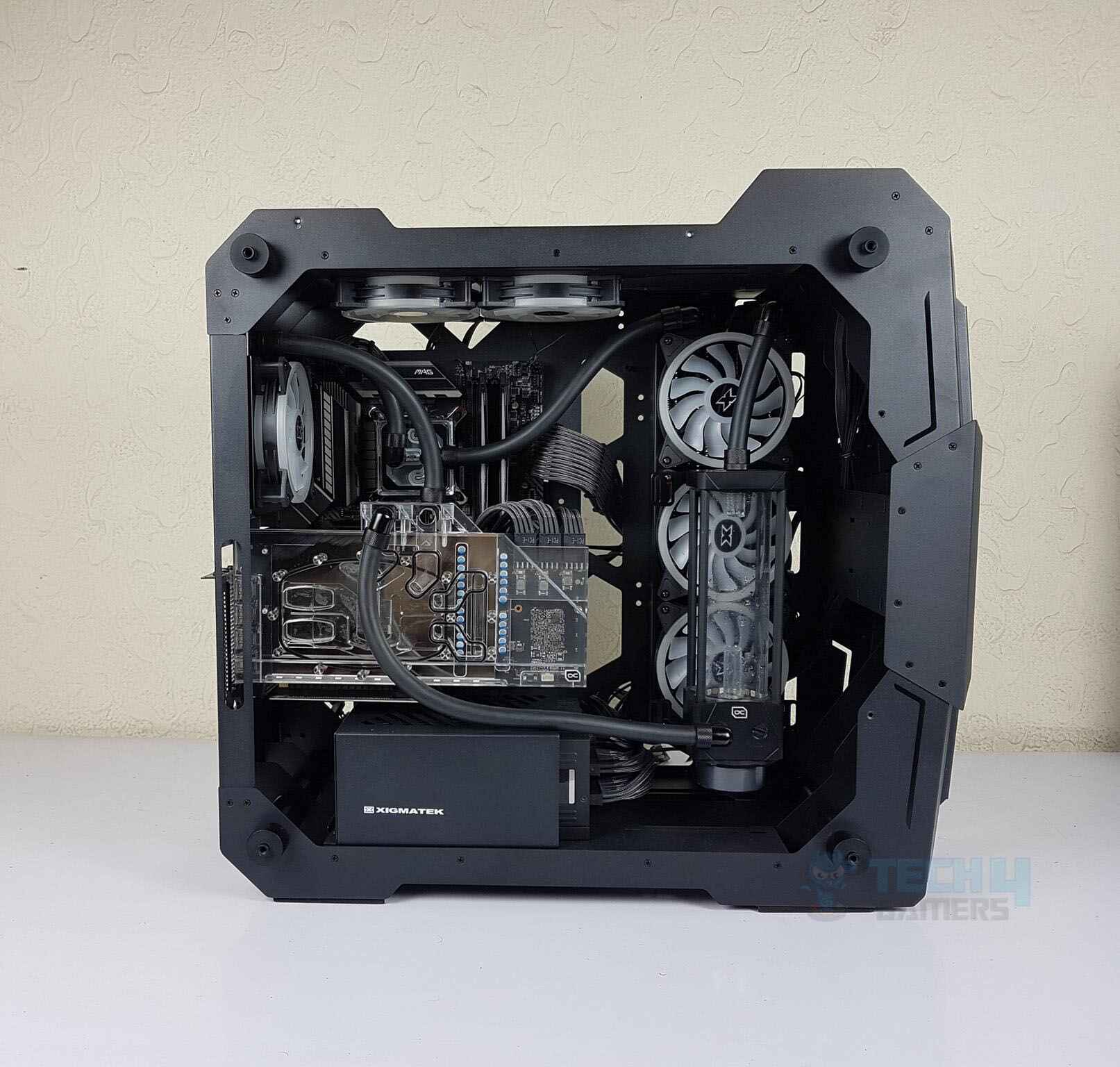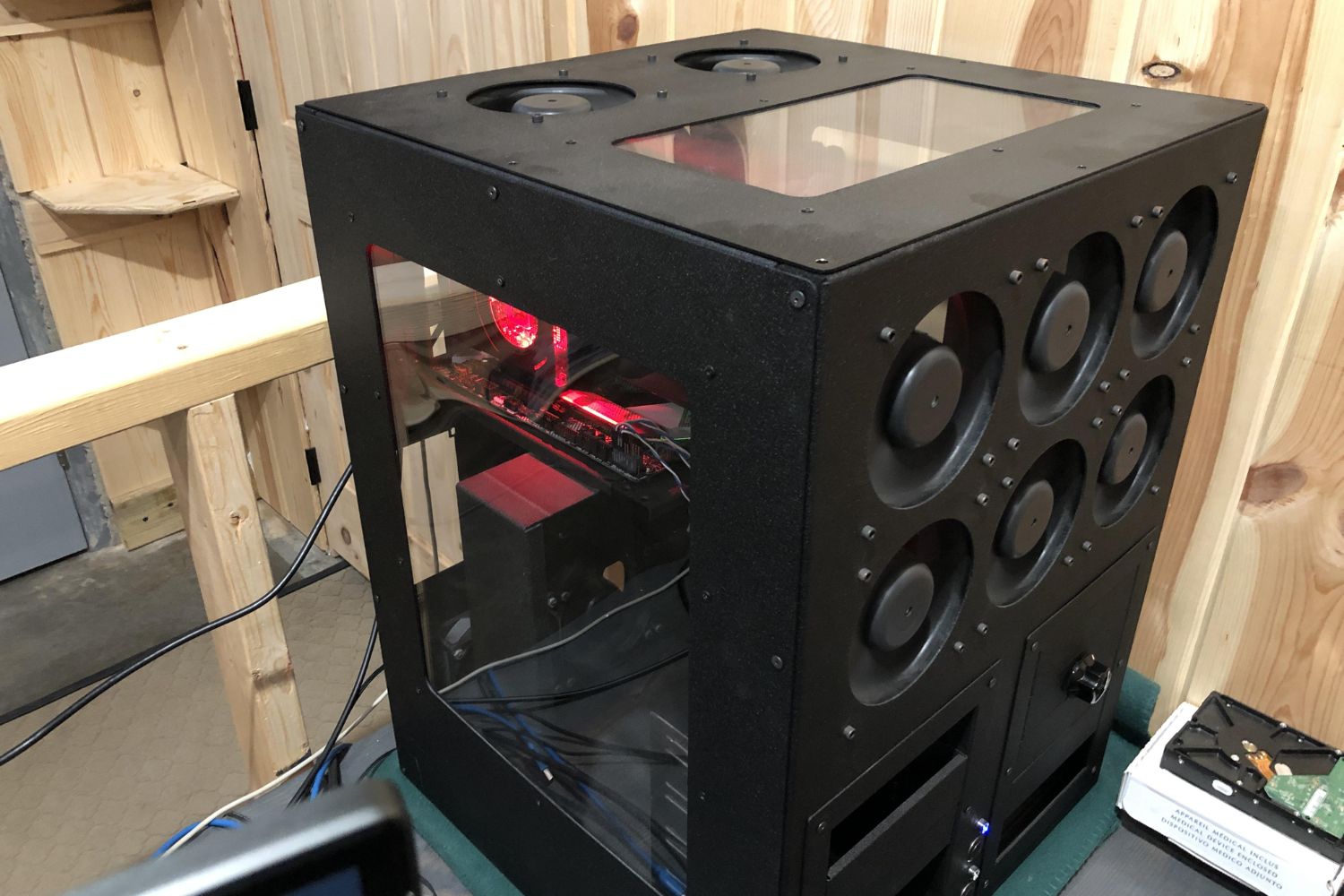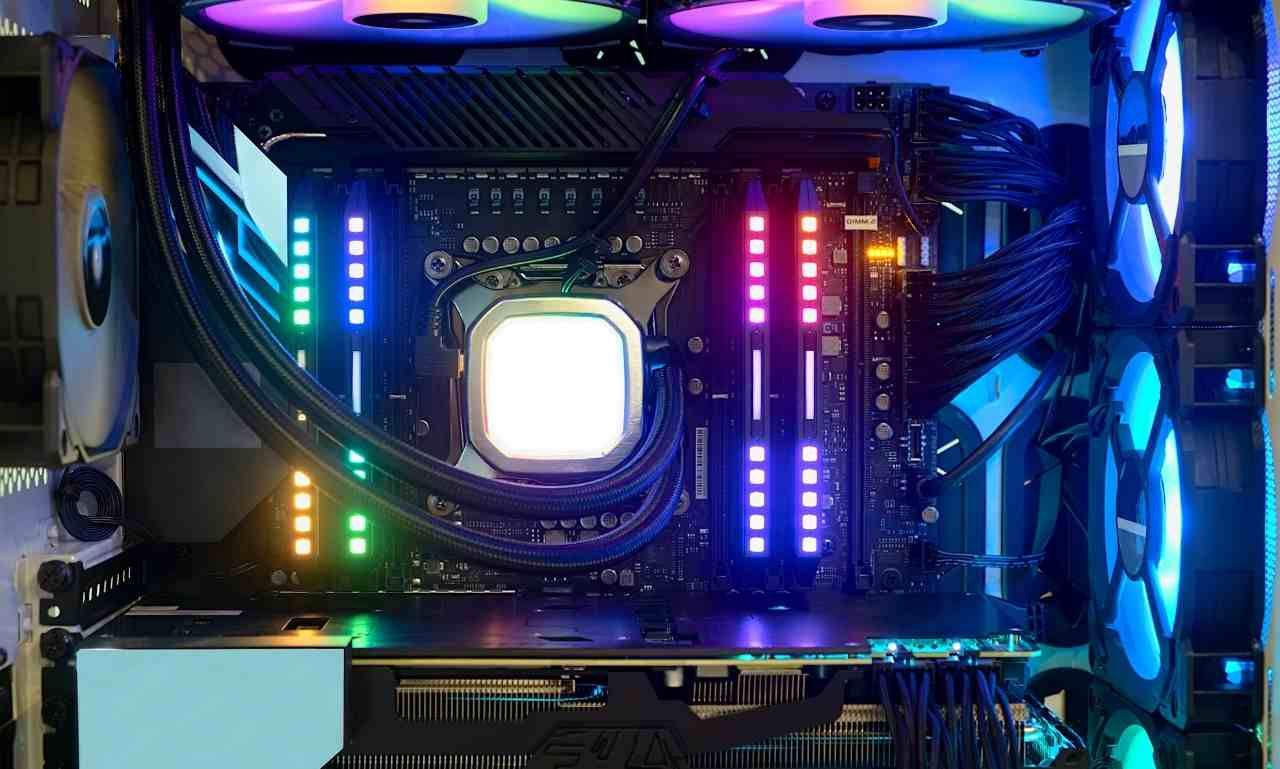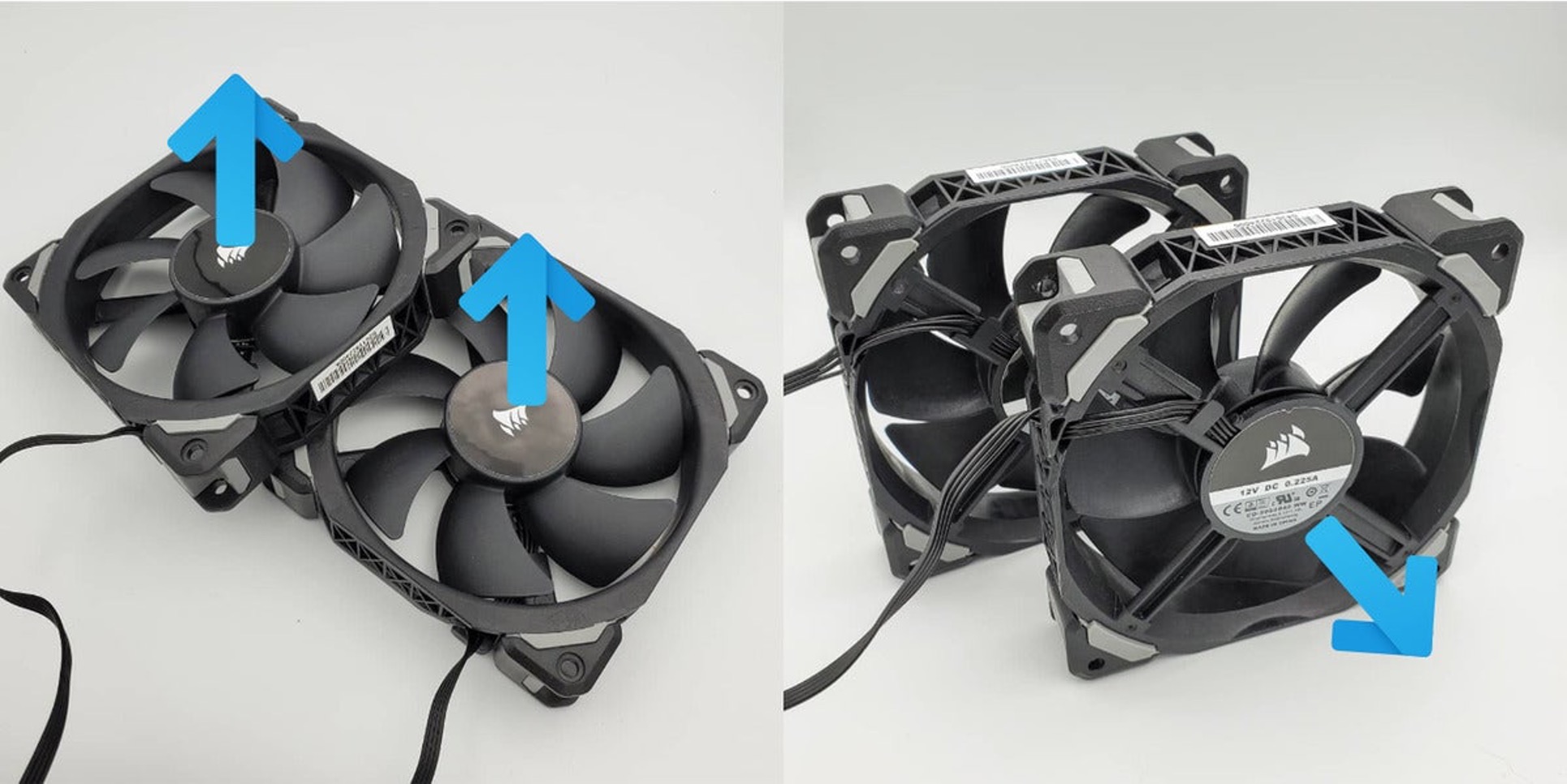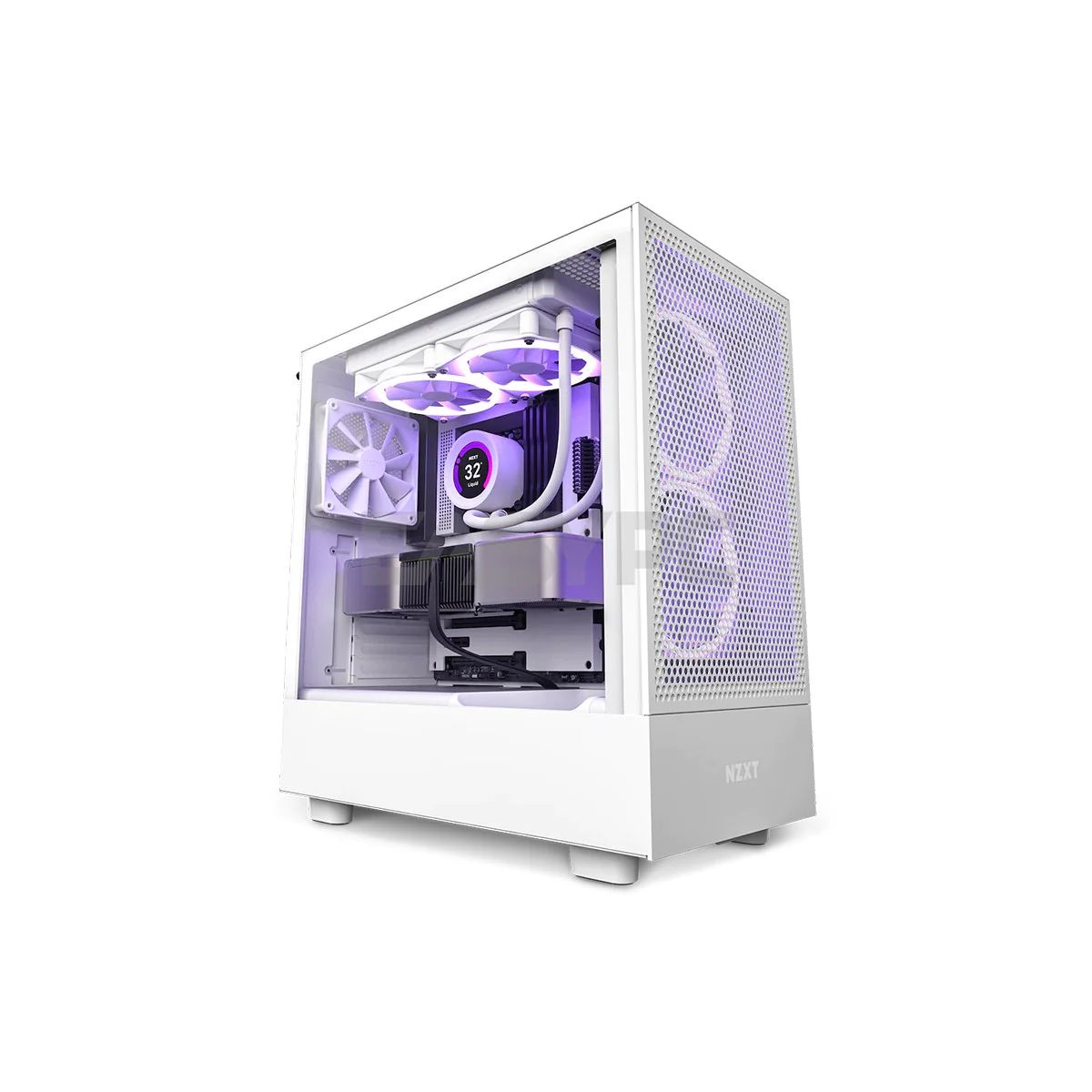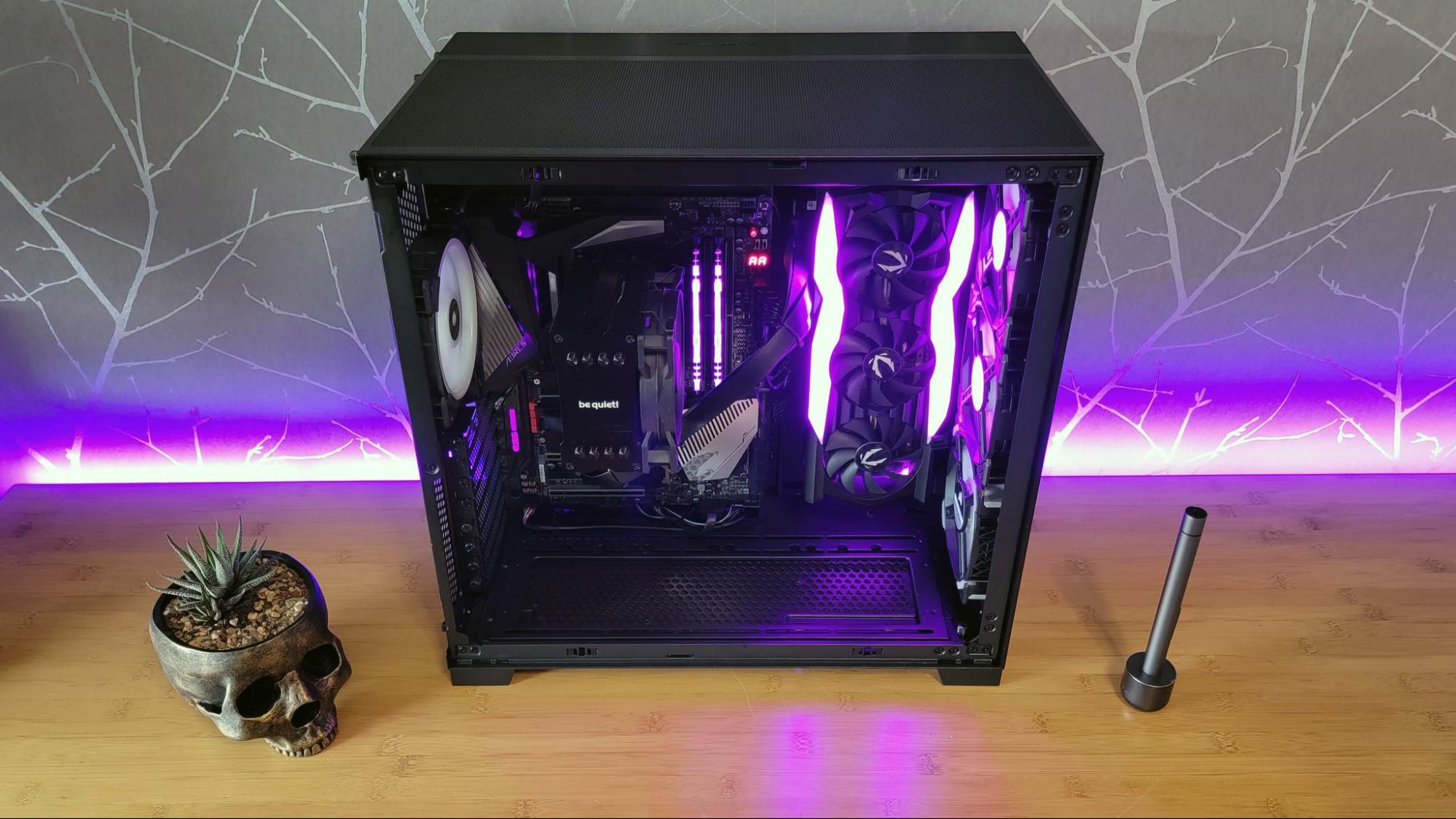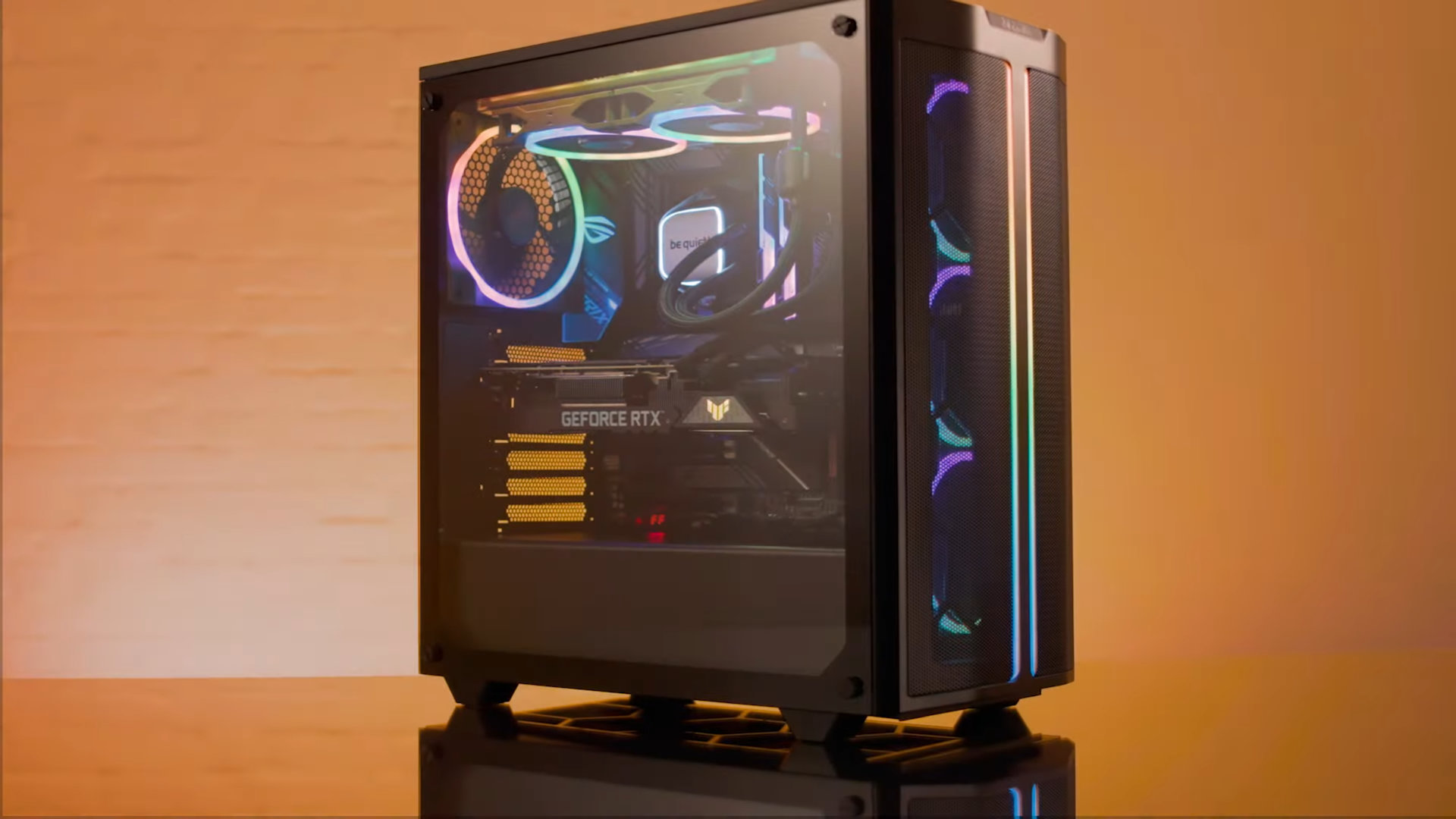Introduction
Welcome to the world of PC enthusiasts and tech-savvy individuals, where cooling your computer is just as important as the hardware inside. One crucial aspect of PC cooling is the proper ventilation of your system. PC case fans play a vital role in expelling hot air from your computer and ensuring its optimal performance.
When it comes to PC case fans, one common concern is whether they are exhausting air effectively. In this article, we will guide you on how to determine if your PC case fans are doing their job properly.
PC case fans are components mounted inside your computer’s case that circulate air to cool down various components such as the CPU, GPU, and hard drives. They consist of fan blades that rotate, creating airflow and reducing the temperature inside your computer. There are usually two types of case fans – intake fans that bring in cool air from outside and exhaust fans that expel hot air from the case.
Proper exhaust fan operation is crucial for maintaining the overall temperature inside your computer case. If your exhaust fans are not functioning optimally or are improperly installed, hot air can accumulate, leading to increased temperatures and potentially affecting the performance and lifespan of your computer components.
Identifying whether your PC case fans are exhausting air effectively is essential for computer maintenance and performance optimization. In the following sections, we will explore various signs and methods to help you determine if your PC case fans are doing their job properly.
What are PC case fans?
PC case fans are an integral part of maintaining proper airflow and cooling within a computer system. They are designed to circulate air inside the computer case, dissipating heat generated by various components such as the CPU, GPU, and hard drives.
These fans are typically mounted on the front, rear, or side panels of the computer case. They usually come in standard sizes, such as 120mm or 140mm, although other sizes are also available. PC case fans are powered by the computer’s power supply or directly plugged into the motherboard using a fan header.
The main purpose of PC case fans is to remove hot air from inside the computer case and draw in cooler air from outside. By ensuring a constant flow of fresh air through the case, PC case fans help prevent components from overheating, thus maintaining stable and optimal performance.
There are two main types of PC case fans – intake fans and exhaust fans. Intake fans are usually placed at the front or sides of the case, and their primary function is to bring in cool air from the outside. On the other hand, exhaust fans are typically located at the rear or top of the case, expelling hot air generated by the components.
In addition to these primary fans, some cases also have additional fans mounted on the top or side panels. These fans can provide supplementary airflow to specific components or areas within the case, further improving cooling efficiency. Some high-end cases even include features such as fan controllers or RGB lighting options to enhance both functionality and aesthetics.
PC case fans are available in various configurations, including different speeds and noise levels. It is important to choose fans that are suitable for your specific needs and computer case. Fan speed is measured in revolutions per minute (RPM), and higher RPM generally translates to more effective airflow but also increased noise levels. Noise is measured in decibels (dB), and it’s crucial to strike a balance between cooling performance and a quiet operating environment.
Now that we understand what PC case fans are and their primary function, let’s move on to the importance of exhaust fans in maintaining optimal airflow within your computer case.
Importance of exhaust fans
Exhaust fans play a crucial role in maintaining proper airflow and cooling within your computer case. They are responsible for expelling hot air that accumulates inside the case, ensuring that the components remain at optimal temperatures. Here are a few key reasons why exhaust fans are important for your computer:
- Heat dissipation: One of the primary functions of exhaust fans is to dissipate the heat generated by the computer’s components. As these components work, they generate heat, which, if not effectively removed, can lead to thermal throttling, decreased performance, and potential damage.
- Temperature regulation: By expelling hot air from the case, exhaust fans help regulate the overall temperature inside the computer. This prevents a buildup of heat, keeping the components within their recommended temperature ranges. Maintaining proper temperatures is essential for the longevity and performance of computer hardware.
- Preventing hotspots: Without proper exhaust fans, hot air can accumulate in specific areas of the case, leading to hotspots. Hotspots can cause localized overheating and compromise the stability and functionality of nearby components. Exhaust fans ensure that hot air is constantly being removed, preventing the formation of hotspots.
- Dust and debris removal: Along with heat, exhaust fans also help in removing dust and debris from inside the computer case. The continuous airflow created by the fans helps prevent the buildup of dust on components, which can impede cooling and potentially cause hardware malfunctions. Regularly cleaning the exhaust fans and filters can significantly improve the overall longevity of your computer system.
- Aesthetic improvement: Exhaust fans are often installed at the rear or top of the case, and they can also serve an aesthetic purpose. They come in various designs and can complement the overall look and style of your computer build, adding a touch of visual appeal alongside their performance benefits.
Overall, exhaust fans are vital for maintaining optimal airflow, cooling, and component longevity in your computer case. Whether you’re a casual user or an avid gamer pushing your hardware to the limits, having properly functioning exhaust fans is essential for ensuring the optimal performance and lifespan of your computer system.
Signs your PC case fans are exhausting properly
Determining whether your PC case fans are effectively exhausting air is crucial for maintaining the optimal performance and lifespan of your computer components. Here are some signs to look out for that indicate your PC case fans are doing their job properly:
- Temperature monitoring: Keeping an eye on the temperatures of your computer components can be a good indicator of the effectiveness of your exhaust fans. Use software or hardware monitoring tools to check the temperatures of your CPU and GPU. If the temperatures remain within the manufacturer’s recommended ranges during demanding tasks or gaming sessions, it indicates that your exhaust fans are successfully removing hot air.
- Visual examination: One of the easiest ways to determine if your PC case fans are exhausting properly is through a visual inspection. Ensure that the fans are spinning and that the blades are not obstructed by dust or cables. You should see a consistent flow of air being expelled from the exhaust fan locations, indicating that they are functioning correctly.
- Listening for airflow and noise: Paying attention to the sound coming from your PC can provide valuable insights into the effectiveness of your exhaust fans. Properly functioning fans create a steady and consistent airflow sound. If you notice a lack of airflow noise or unusual noises such as rattling or scraping, it may indicate a problem with your exhaust fans.
- Checking the position of the fan blades: Take a closer look at the position and angle of the fan blades. They should be angled in a way that pushes air out of the case. If you notice the blades are facing the wrong direction or are obstructed, they may not be expelling air properly. Make sure the fans are correctly installed and aligned to maximize their effectiveness.
- Measuring airflow with a smoke pen or tissue paper: If you want a more accurate assessment of your exhaust fans’ performance, you can use a smoke pen or tissue paper to visualize the airflow. Hold the smoke pen or tissue paper near the exhaust fan locations, and observe how the smoke or paper moves. A steady flow of air blowing away from the case indicates that the exhaust fans are functioning correctly.
By paying attention to these signs, you can determine whether your PC case fans are properly exhausting air and maintaining optimal airflow within your computer case. If you notice any issues or suspect that your exhaust fans are not working as intended, it’s important to troubleshoot and address the problem promptly to prevent potential overheating or performance issues.
Visual examination of the fan direction
A visual examination of the fan direction is a simple yet effective way to determine if your PC case fans are exhausting air properly. By ensuring that your fans are facing the correct direction, you can maximize their efficiency in expelling hot air from your computer case.
Here are some steps to visually examine the fan direction:
- Locate the exhaust fans: Identify the locations where your exhaust fans are installed. Typically, they are positioned at the rear or top of the computer case, but this can vary depending on the case design.
- Observe the fan blades: Take a close look at the fan blades. They should be angled in a way that pushes air out of the case. If the blades are facing inward or obstructed by cables or other objects, they may not be effectively exhausting air.
- Check for fan labels: Many fan models have labels or markings indicating the direction of airflow. Look for these labels on the fan itself or refer to the manufacturer’s documentation to ensure that the fans are installed with the correct orientation.
- Ensure proper installation: Make sure that the exhaust fans are properly installed and securely mounted in the case. Loose or improperly installed fans may not function optimally in exhausting air.
- Inspect for obstructions: Ensure that there are no obstructions blocking the path of the airflow. Dust buildup, cables, or other components in close proximity to the exhaust fans may hinder their ability to effectively expel hot air from the case.
By visually examining the fan direction and ensuring that the fans are facing the correct way, you can optimize the airflow within your computer case. This helps in preventing the accumulation of hot air and maintaining the temperature of your components within acceptable limits.
If you find that your exhaust fans are facing the wrong direction or are obstructed, make the necessary adjustments or clear any obstructions to ensure optimal performance. Regularly inspecting and correcting the fan direction can significantly improve the cooling efficiency and overall performance of your computer system.
Temperature and performance monitoring
Monitoring the temperatures of your computer components and observing their performance is an effective way to gauge whether your PC case fans are effectively exhausting air. By keeping track of these parameters, you can assess how well your fans are working and make any necessary adjustments to maintain optimal cooling. Here are some methods for temperature and performance monitoring:
- Software monitoring tools: There are various software applications available that allow you to monitor the temperatures of your CPU, GPU, and other components. These tools provide real-time temperature readings and can give you insights into how effectively your PC case fans are removing heat. Examples of popular monitoring software include HWMonitor, SpeedFan, and Core Temp.
- Motherboard BIOS: Most modern motherboards have built-in temperature monitoring capabilities in their BIOS. By accessing the BIOS settings, you can view the temperatures reported by the motherboard sensors. This can provide an accurate and reliable indication of the overall temperature inside your computer.
- System performance: Monitor the overall performance of your computer during demanding tasks or gaming sessions. If you notice that your system is experiencing thermal throttling, sudden performance drops, or crashes, it may indicate inadequate airflow and potential issues with your PC case fans.
- Frequency of fan speed: Some software monitoring tools or motherboard BIOS also provide information about the fan speeds. By monitoring the fan speeds, you can ensure that they are running at the appropriate RPMs and adjusting according to the workload. Abnormally low fan speeds may suggest the need for cleaning or potentially malfunctioning fans.
- Component lifespan: Overheating components can reduce their lifespan. If you notice that certain components are experiencing higher temperatures than usual or are exhibiting signs of degradation, it’s essential to investigate whether your PC case fans are exhausting air effectively.
Regular temperature and performance monitoring can help you identify any potential issues with your PC case fans. If you consistently observe high temperatures, performance drops, or instability, it may indicate that your fans need attention. Taking prompt action, such as cleaning the fans, optimizing fan curves in fan control software, or upgrading to more efficient fans, can help ensure proper airflow and cooling within your computer system.
By keeping a close eye on the temperatures and performance of your computer components, you can make informed decisions about the effectiveness of your PC case fans and take necessary steps to maintain optimal cooling and performance.
Checking the position of the fan blades
Ensuring that the fan blades of your PC case fans are properly aligned and positioned is crucial for effective airflow and optimal exhaust performance. The angle and orientation of the fan blades play a significant role in directing the airflow in the desired direction. Here are some steps for checking the position of the fan blades:
- Power off your computer: Before inspecting the fan blades, make sure to turn off your computer and unplug it from the power source. This ensures your safety and prevents any accidental damage to the components.
- Open your computer case: Carefully remove the side panel of your computer case to gain access to the internal components. Refer to your computer’s manual or online resources for detailed instructions on how to open the case, as the process may vary depending on the case model.
- Locate the exhaust fans: Identify the location of the exhaust fans within your computer case. Typically, they are positioned at the rear or top of the case. In some cases, there may be additional exhaust fans on the side panel or other locations.
- Inspect the fan blades: Examine the orientation and alignment of the fan blades. They should be angled in a way that pushes air out of the case. Verify that the blades are not obstructed by dust, cables, or other components. If you notice any obstructions, carefully remove them to facilitate unobstructed airflow.
- Ensure proper fan installation: Confirm that the fans are securely mounted and properly installed. Loose or misaligned fans may not function optimally in exhausting air. Make sure that all screws or mounting mechanisms are tightened appropriately to minimize vibrations and ensure a stable installation.
- Refer to manufacturer’s documentation: If you are uncertain about the correct blade orientation or need specific details about your fan model, consult the manufacturer’s documentation. They often provide guidelines and diagrams illustrating the correct alignment and positioning of the fan blades.
By checking the position of the fan blades and ensuring that they are facing the correct direction, you can maximize their effectiveness in expelling hot air from your computer case. Properly aligned fan blades facilitate a steady and directed airflow, improving overall cooling efficiency and preventing the buildup of heat in crucial components.
Remember to always handle the fan blades with care, as they can be delicate. Additionally, regularly cleaning the fan blades and removing any accumulated dust can help maintain optimal performance over time.
Once you have inspected and adjusted the position of the fan blades, secure the side panel of your computer case, plug in the power, and power on your computer. Monitor the temperatures and performance to ensure that the adjustments have improved the effectiveness of your PC case fans.
Listening for airflow and noise
Another method to determine if your PC case fans are functioning properly is to listen for airflow and noise. By paying attention to the sound produced by your fans, you can assess their performance and identify any abnormalities that may indicate issues. Here’s how to listen for airflow and noise:
- Minimize background noise: Find a quiet environment where you can focus on listening to the airflow and fan noise without interference from other sounds. This will help you discern the subtle nuances in fan performance.
- Identify normal fan noise: Familiarize yourself with the typical sound produced by your fans under normal operation. This will serve as a baseline for comparison when listening for any irregularities.
- Listen for consistent airflow: Properly functioning fans should produce a consistent and steady airflow sound. Place your ear near the exhaust fan locations and listen for the presence of airflow noise. A lack of airflow noise may indicate a problem with the fan or insufficient ventilation.
- Look out for unusual noises: Pay attention to any unusual noises coming from your fans. Rattling, buzzing, or scraping sounds can be indications of mechanical issues or obstructions. If you notice any irregular noises, it’s essential to investigate and address the problem promptly to prevent further damage.
- Consider fan speed: Higher fan speeds typically result in louder noise levels. If you have manually set the fan speed to a higher level or are utilizing fan control software, be aware that increased noise may be expected. However, if the noise seems excessively loud or different from the usual noise level, it may suggest a problem with the fan.
It’s important to note that while fans are designed to produce some noise, excessive or irregular noises can indicate issues with their operation. Regularly listening for abnormal sounds and investigating any deviations from normal fan noise can help detect problems early and prevent potential damage to your computer components.
Additionally, it’s worth mentioning that factors such as fan quality, age, and maintenance can also affect the noise level produced. Keeping your fans clean and free of dust can improve their performance and reduce noise levels. If you notice excessive noise or any unusual sounds persisting after cleaning, it may be necessary to consider replacing the fan.
By actively listening for airflow and noise, you can gain valuable insights into the performance of your PC case fans and take appropriate steps to ensure efficient and quiet operation.
Measuring the airflow with a smoke pen or tissue paper
To obtain a more accurate assessment of your PC case fans’ performance, you can measure the airflow using a smoke pen or tissue paper. These methods allow you to visualize the airflow and determine whether your fans are effectively exhausting air. Here’s how you can measure the airflow:
- Choose a smoke pen or tissue paper: Decide whether you prefer using a smoke pen or tissue paper for this measurement. Smoke pens emit a small amount of visible smoke, which makes it easier to visualize the airflow. Alternatively, tissue paper can be used to detect the movement of air.
- Prepare your environment: Find a well-ventilated area or open space where you can conduct the measurement without interference. And ensure that there are no flammable materials nearby.
- Power on your computer: Turn on your computer and let it run for a few minutes to ensure that the fans are operational and have reached a stable state.
- Hold the smoke pen or tissue paper near the exhaust fans: Position yourself near the exhaust fan locations and hold the smoke pen or tissue paper close to them without obstructing the fan blades.
- Observe the smoke or movement of the tissue paper: If using a smoke pen, you should see the smoke being blown away from the case, indicating that the exhaust fans are effectively expelling air. If using tissue paper, watch for any movement or fluttering caused by the air being expelled from the case.
- Repeat the process for different fan locations: If your computer has multiple exhaust fan locations, repeat the measurement process for each one to ensure that airflow is consistent across all fans.
Measuring the airflow with a smoke pen or tissue paper provides a visual representation of how well your PC case fans are exhausting air. This method can help you identify any issues with airflow obstructions, low fan performance, or inadequate ventilation.
If you notice that the smoke or tissue paper movement is weak or inconsistent, it may indicate poor exhaust fan performance or blockages in the airflow path. In such cases, inspect the fans for obstructions, ensure proper fan installation, and consider cleaning or replacing the fans if necessary.
Keep in mind that this method provides a qualitative assessment of the airflow and should be used as one of the tools alongside temperature monitoring and visual inspections. It contributes to a comprehensive evaluation of your PC case fans’ effectiveness in exhausting air and maintaining proper airflow within your computer case.
Conclusion
Ensuring that your PC case fans are effectively exhausting air is crucial for maintaining optimal performance and preventing temperature-related issues in your computer system. By paying attention to various signs and performing simple checks, you can assess the functionality of your exhaust fans and address any potential issues.
Through visual examination, you can verify the direction of the fan blades, ensuring that they are positioned correctly for optimal airflow. Additionally, listening for airflow and noise can help you identify any irregularities or obstructions that may affect fan performance.
Temperature and performance monitoring provide valuable insights into the effectiveness of your exhaust fans. By monitoring component temperatures, fan speeds, and system performance, you can determine if the airflow is sufficient for proper cooling and prevent overheating-related problems.
Finally, measuring airflow using a smoke pen or tissue paper allows you to visually assess how well your PC case fans are exhausting air. The movement of smoke or tissue paper can indicate the efficiency of your fans in maintaining a steady and directed airflow.
By combining these methods, you can ensure that your PC case fans are operating as intended, expelling hot air and maintaining a cool and stable environment for your computer’s key components. Regular maintenance, such as cleaning the fans and removing any obstructions, is essential for optimizing their performance and extending their lifespan.
Remember, the proper functioning of your PC case fans contributes to the overall longevity and performance of your computer system. Keeping your components cool ensures stability and reliability, particularly during demanding tasks or intense gaming sessions.
If you suspect any issues or observe signs indicating poor exhaust fan performance, it is recommended to troubleshoot and address the problem promptly. Whether it’s cleaning the fans, adjusting their positions, or considering an upgrade, addressing airflow concerns will go a long way in maintaining the health and functionality of your computer system.







